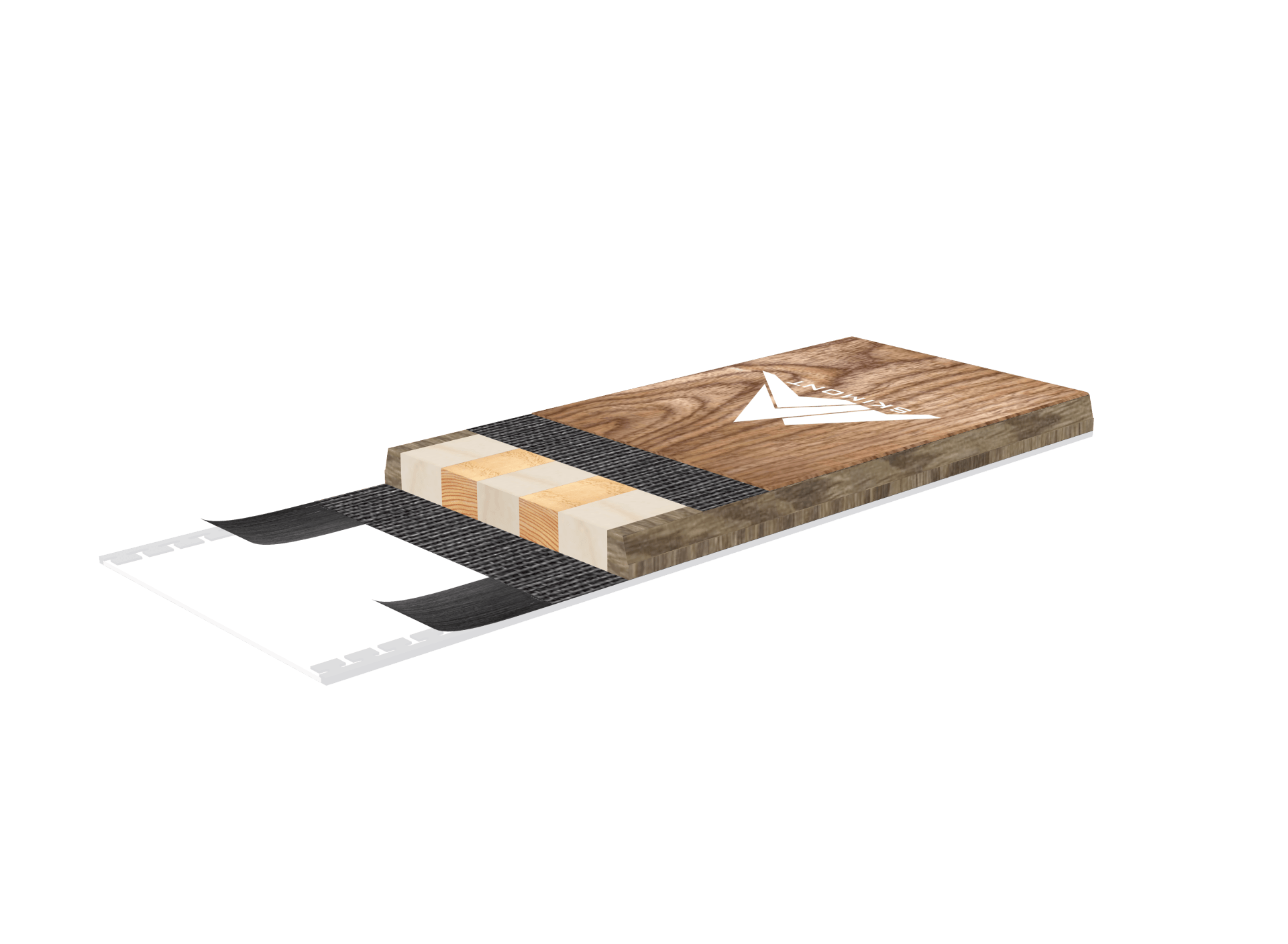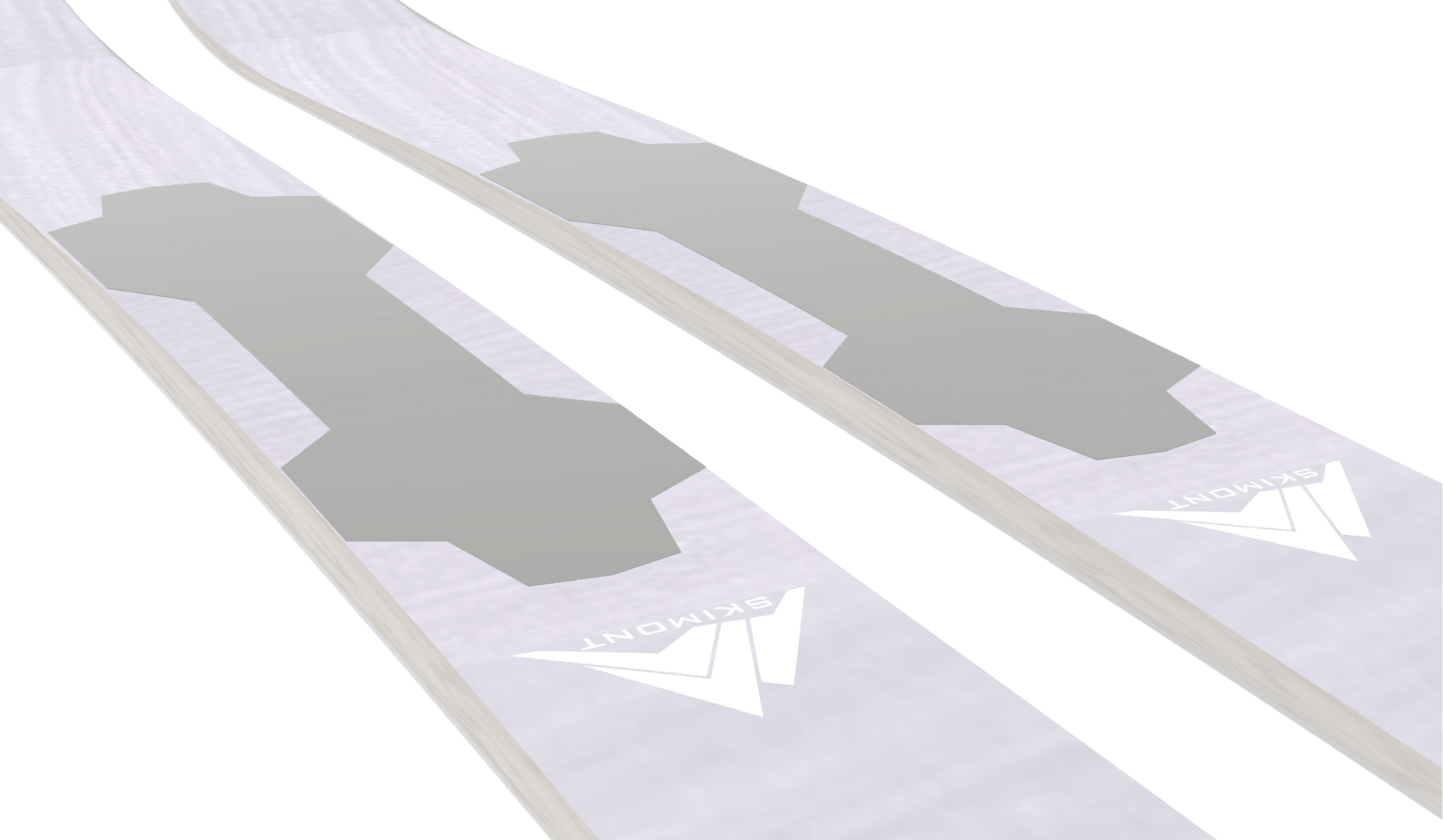Production
Here are the individual components and their processing explained
the Sandwich Construction from bottom to top
- the Base.
- the Edges.
- the VDS.
- the lower Belt.
- the Core.
- the upper Belt.
- the Cover.
- the Bindungplate.
For a ski to glide well over the snow, it needs a base that absorbs wax, holds well and is abrasion resistant.
The base is critical to the shape of the ski. That is why we use laser-cut templates to ensure the highest precision. The bases are copied exactly onto these templates using a flush milling cutter.
the Edges.
Once the base has been milled flush with the template, the spring steel edges are glued to the base by the market leader from Innsbruck. This step is done entirely by hand, and care must be taken to ensure that there is no gap between the edge and the rubber, so the edge must be perfectly pre-bent at the tips, as these have a special shape.
the VDS.
VDS, short for Vibration Damping System. This 0.2mm thin Rubber Band is layered bewteen the Steel edges and the Fibres in the lower belt. This improves the connection between the two layers and reduces risk of delamination. The softness of the rubber absorbs a majority of micro Vibration. Especially for Skis wich use Carbon Fiber in the lower Belt this is an essential improvement.
the lower belt.
The classic Sandwich construction is best described by a Layering with only 1 degree curvature Layers. The lower belt consists of one or more Layers of different Material. In most cases this is Glasfiber, Carbonfiber, Basaltfiber or Titanal. The Lower Belt is most important for the Flex Stiffness of a Ski, it absorbs the pull Forces wich occur while the Ski is being bend.
the Core. includes
the Sidewalls.
the Tip'n Tailspacers.
the Profile.


The Core is the heart of a ski. Its structure strongly determines the ski's characteristics. It also accounts for most of the weight. Every good ski has a wooden core; the slats, usually made of different types of wood, are glued together vertically or horizontally. Plastic or foam cores are cheap and often inferior, and usually cannot match the durability and performance of wooden cores. Wood cores are used exclusively in almost all high-end skis.
The choice of wood and construction varies from category to category. Lighter woods are used for touring skis, while harder and heavier woods are used for piste Skis.
Our Tripple-Wood Cores are made from a combination of Paulownia, a very light and strong wood with short fibres and dampening properties, two full length Ash stringers and Oak Sidewalls, wich stiffen the carve of the Skis. Ash is a hard wood with long fibres that has been used in ski and snowboard construction for decades. The stringers are glued together to hold the binding screws securely. All slats are glued over their entire length, with no wedge fingers or other fibre interruptions, as these are predetermined breaking points that pose a risk to the ski and the rider. Our Tripple-Wood Cores are therefore very strong and do not compromise on stability despite their low weight.
The Tripple-Wood Cores use an optimised position of the ash slats, which allows the slats to be made narrower while still holding the screws securely. A
Titanal Binding Plate, is additionally and helps with the Binding Security further. When buying a touring ski, it is therefore important to know what binding you are going to use, as bindings have different widths from model to model.
Serviceliste
-
the Sidewalls.Listenelement 1
The sidewalls are between 7 and 10mm thick and are glued to the sides of the cores for protection against hits and Water. We use clear coated oak as standard.
-
the Tip'n Tailspacer.Listenelement 2
The ABS Tip'n Tailspacers are fitted to the tip and end of the core to protect it from common knocks and blows. To ensure a clean and stable transition between the wooden core and the tipspacer, the core is gutted at the bottom in exactly the same thickness (minimum 10cm overlap) and glued with PU. This results in an overlap of the two materials over a length of atleas 10cm, which is much more stable than butt-joining. The standard Tip'n Tailspacer is black or white.
-
the Profile.Listenelement 3
The profile of the core determines how thick the core is at what langitude. The core is thicker or thinner depending on the ski category and size. The thicker the core, the harder the flex of the ski. Downhill skis have thicker cores than all-mountain or freeride skis. The thickest part of the core is between 10 and 14mm (except for children's skis). We also use laser templates for the core profile, which guide a milling carriage to determine the core thickness.
To insert the edges into the core, the sidewalls are recessed 9mm wide & 0.6mm deep to neatly embed the edge tabs into the base.
the upper belt.
Just like the bottom chord, the layer above the core consists of fiber composites or titanal, which are roughly cut to width before installation. Unlike the bottom chord, the top chord is less relevant for the flex hardness of a ski due to its position above the core, but more relevant for the torsional stiffness.
the Cover.
Most Brands use plastic Topsheets for their Skis to protect them from physical hits like scratches and water. We want to decrease the Environmental impact by using real wood veneers instead of plastic. The Cover is being sanded and get a multilayer clearcoat to protect against water and scratches while maintaining the wooden haptics and optics. In case of deep scratches, these covers are very easy to repair and make them look nice and fresh again.

































